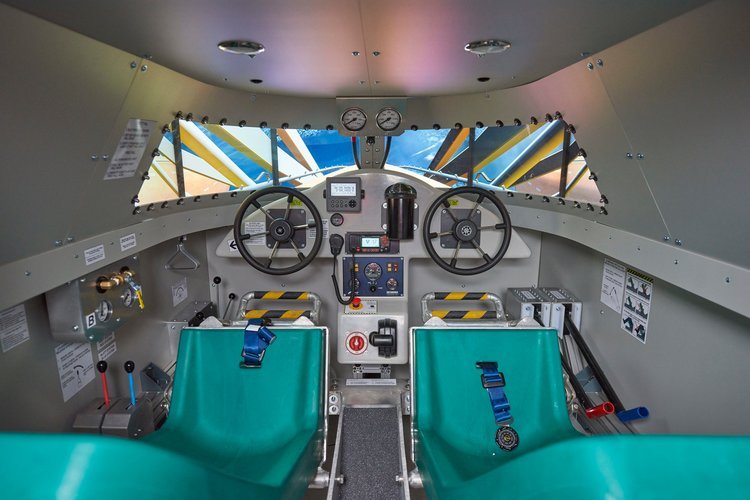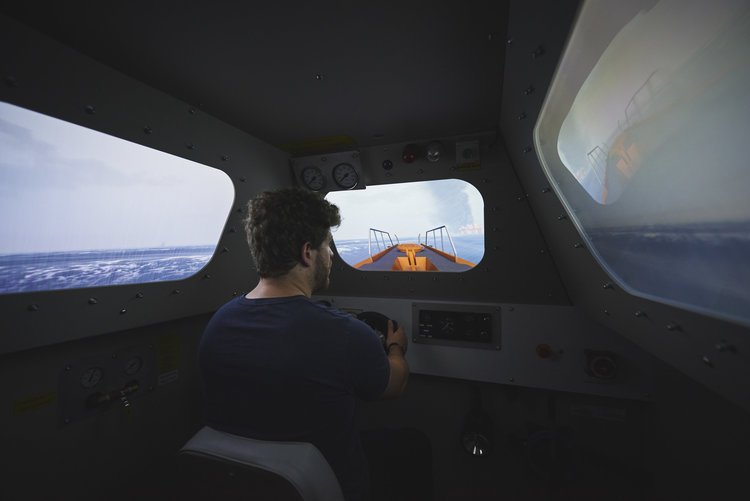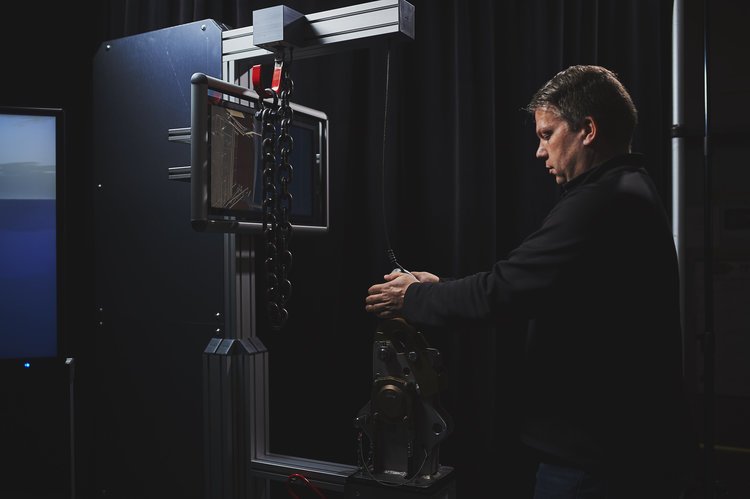Lifeboat Simulators
Virtual Marine Lifeboat Simulators
Virtual Marine’s lifeboat simulators are globally certified by Det Norske Veritas (DNV) and are recognized by the International Maritime Organization’s (IMO) STCW and MODU Codes. Customized to actual lifeboats, the simulators range from part-task to full mission with motion platforms, and covers simulated davit launch and freefall/skid lifeboats. The systems offer training management, with curriculum scenarios covering time of day, sea states, varied weather, and emergencies; and the simulators can be either autonomous or instructor-based. A desktop version (Virtual Reality compatible) is now available, and is ideal for repetitive learning and skill development.
Simulated scenarios expose mariners to a variety of training outcomes, which enable them to improve their specific boat skills in a controlled environment, including: preparation, launching, releasing and boat handling skills. Practice scenarios provide a means to practice and demonstrate launching and recovering tasks, which meet or exceed the training requirements for lifeboat drills.
Benefits of Lifeboat Simulation Training
Technology built on strong research – Virtual Marine’s Lifeboat simulators have been certified by Det Norske Veritas Germanischer Lloyd (DNV-GL), as being capable of representing realistic situations needed for training.
A 2017 Canadian research study undertaken to evaluate available training alternatives, revealed that the likelihood of an error-free launch on the first attempt under average emergency conditions, that the skills maintained in simulated emergency conditions was highest for those that practice with a simulator in representative emergency scenario, compared to those who practiced in calm conditions or with classroom based training. These studies also noted a benefit to training more frequently and with hands-on equipment, and a simulator provides that capability to offer that type of training.
Lifeboat simulation provides for an enhanced confidence to seafarers, in order to respond to any emergency, and offers these key advantages over conventional training:
Allows seafarers to practice plausible emergency situations;
Allows seafarers to practice at night, and in varied weather conditions;
Allows seafarers to practice in heavy sea state conditions;
Provides practice on recognizing and dealing with hazards and faults;
Offers repeatable and consistent training with more hands on training;
Offers graduated levels of training, while learning from experience; and,
Reduces the risks to both seafarers and boats.
Regulatory
The Virtual Marine training solution provides instruction and practical training in the operation of lifeboats in accordance with:
sub-paragraph 14.12.4.3 of the 2009 MODU Code and meeting the requirements of MSC.1/Circ.1486 Guidelines on alternative methods for lifeboat drills on MOUs;
section A-VI/2, paragraph 5 of the Manila Amendments to the STCW Code; and,
Sub-paragraph 8.2 of the ISM Code (2010 Edition).







